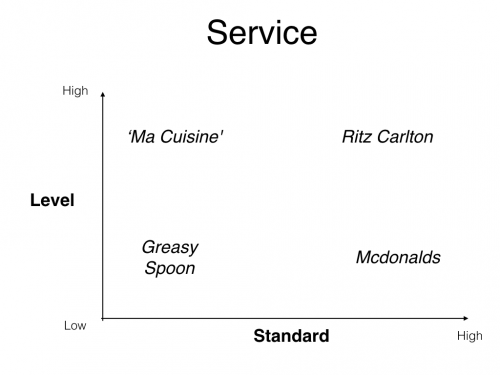
“What use is it to have a bellyful of meat if one can not digest it? If it cannot transform us, if it cannot improve us and fortify us?”
Wrote Michel de Montaigne back in the 16th century in one of his many rants against a French school system that “requires you to just parrot back everything you are told”.
So how do we actually convert knowledge into leadership wisdom?
The key word here is experience, experience not as in breathtaking customer experience, but learning from experience.
Because we all agree that we learn from our experiences, or do we?
If you have ever made the same mistake twice, you will have to agree that we do not consistently learn from our experiences.
When then do you learn from your experiences?
Elementary my dear Watson: Whenever you take the time to reflect on your experiences, you make deeper learning possible.
Reflection can be a personal reflection, or it can tackle the form of a team reflection.
Our reflection can be a surface reflection:
- What happened?
- Which actions were taken?
- What were the consequences that we observed?
Or we can choose to do a deep reflection:
- What did I learn about myself through this experience?
- What are we learning about how this team functions and handles conflict through this experience?
- What broader issue can we see arising from this experience?
Surface reflection helps us understand past actions and behaviours. Deep reflection helps us examine underlying beliefs and assumptions.
Both are important. But even more important is to start developing a practice of reflection. Make a habit of having a regular end of day/week or month reflection session with your team. Develop a personal particle of reflection. The best way to do that is to start a journal and spend just 10-15 minutes a day noting down your answers to:
- What has been my focus today?
- What have I observed?
- What am I learning?
- What will I focus on tomorrow?
Now your are on track to convert knowledge into wisdom.
 This blog post is the second in a series of blog posts where Mike is exploring: Why is it important to develop not just yourself but also the people around you?
This blog post is the second in a series of blog posts where Mike is exploring: Why is it important to develop not just yourself but also the people around you?
Building capacity is at the heart of the Service Profit Chain. If you are not familiar with the intricacies of the Service Profit Chain, we have a special treat for you:
For this month only, you can download Mike’s book Best! No need to be cheap if … for FREE using this coupon JLXW8P9QSE. It is only available for the first 50 people so first come first serve.







